How to Polish Restore Repair Marble Floors Stains to Shine
Marble floors have been around for many years. Castles, mansions, and many homes have used marble in many ways to add style and elegance and beauty. It is common across various elements of a building such as fireplaces, countertops, vanities. Marble flooring has become a popular choice of flooring in many homes today. To keep it shining, it needs care, polishing restoring repairing. Marble floor requires certain techniques to keep from staining scratching and other damages. It keeps the shiny finish Marble is famous for.
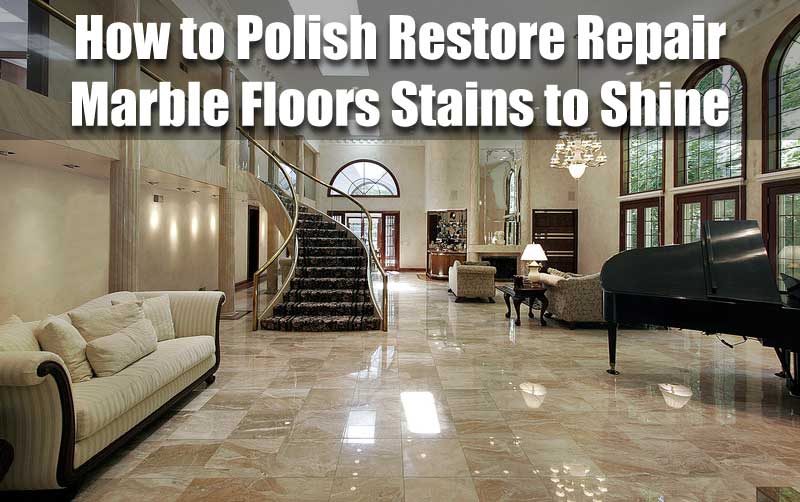
Over time, usage of marble flooring will cause it to lose the shiny finish that it had when first installed. Furniture will also contribute to scratch the surface of marble. Cracks and scratches occur in marble regardless of what you do to minimize such mishaps. We will take a look at what marble is and the ways marble can be polished repaired restored and cared for.
Marble Anatomy
Marble is a soft metamorphic stone. The naturally occurring mineral primarily calcite and others under high pressure and heat forms Marble.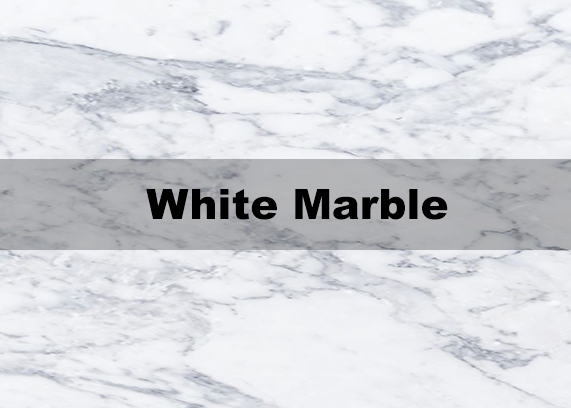
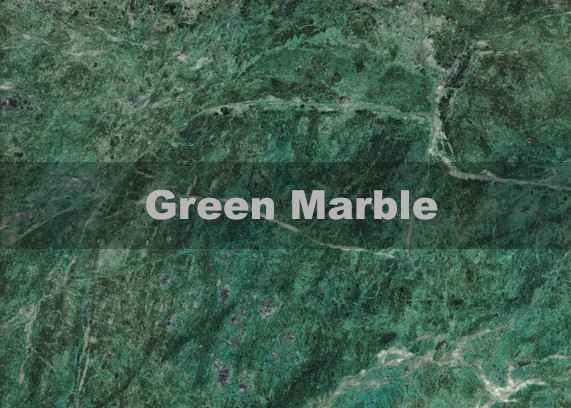 When it comes to marble anatomy, there are many different types of marble. Each type of marble will require a different need for its’ own unique properties. Pure white marble derive from the metamorphism of pure limestone without any impurities. The green color marble is usually due to impurities and high magnesium content in the limestone.
When it comes to marble anatomy, there are many different types of marble. Each type of marble will require a different need for its’ own unique properties. Pure white marble derive from the metamorphism of pure limestone without any impurities. The green color marble is usually due to impurities and high magnesium content in the limestone.
Marble Floor Polishing Restoration Stain Repair
Marble floor polishing restoration stain repair uses diamond floor pads to grind down the surface. It exposes the fresh layer of stone. Then it polishes the surface with finer and finer grade floor polishing pads. At the end of this process, marble floor achieves a mirror like finish.
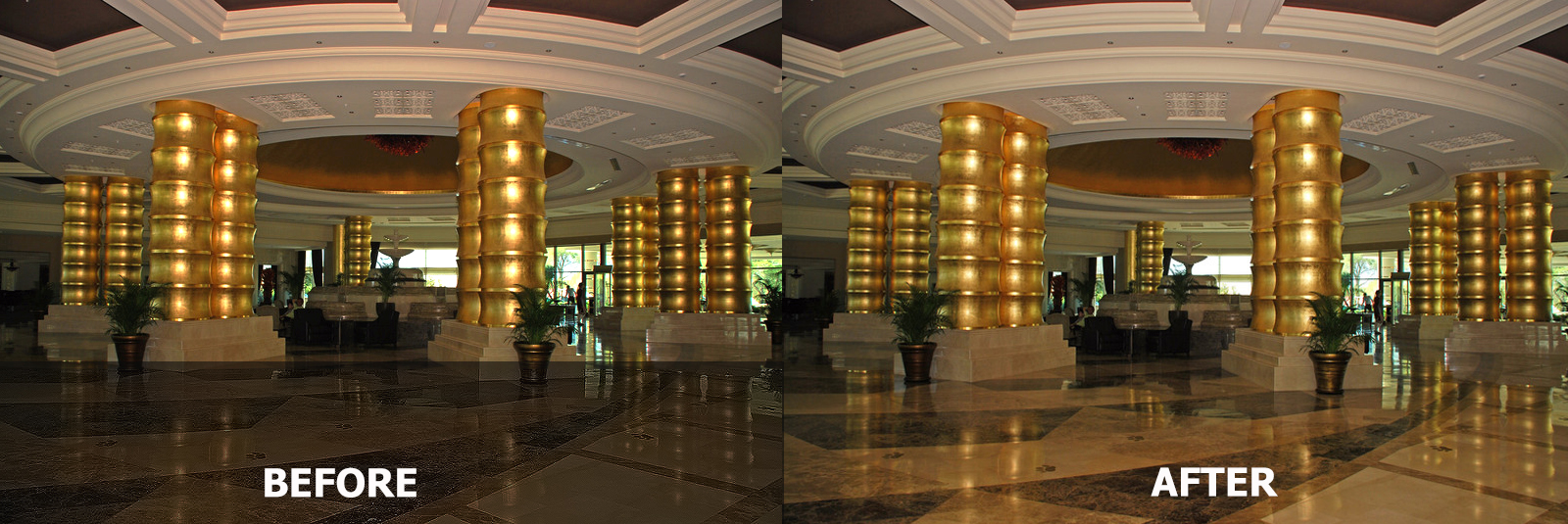
Floor polish restore stain removal repair procedure typically takes 5 steps:
Step 1 - Grinding/Lippage Removal
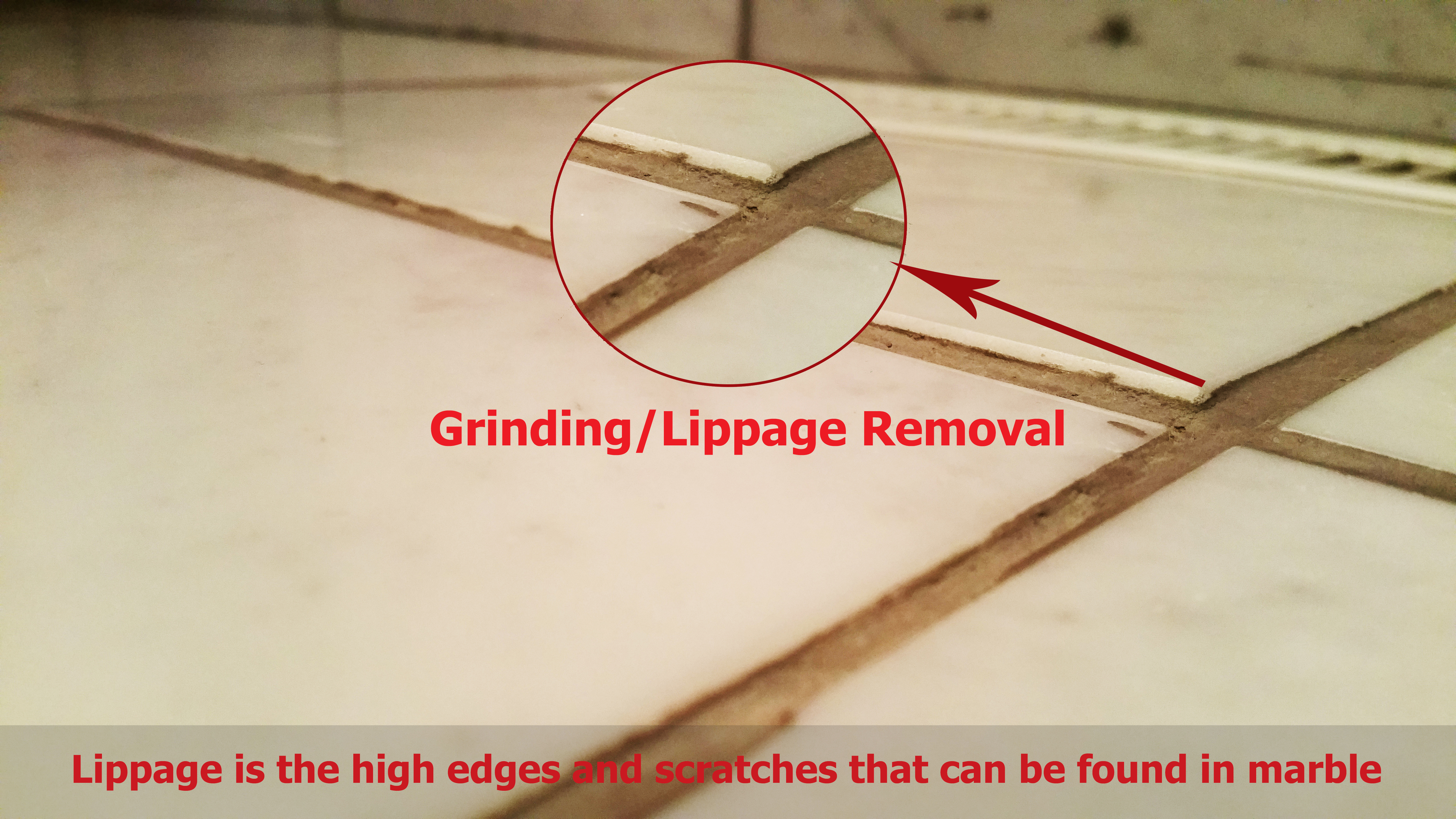
This powerful and dynamic step is also known as lippage removal or flattening. Lippage is the high edges and scratches that can be found in marble. Even new installed marble floor can have some tiles be upper or lower of floor flatness. This step removes all ledges, roughness and brings flatness to marble floors. Also, this step can remove the deepest scratches and stains. Low grit size 30, 50 diamond floor polishing pads are effective for this step.
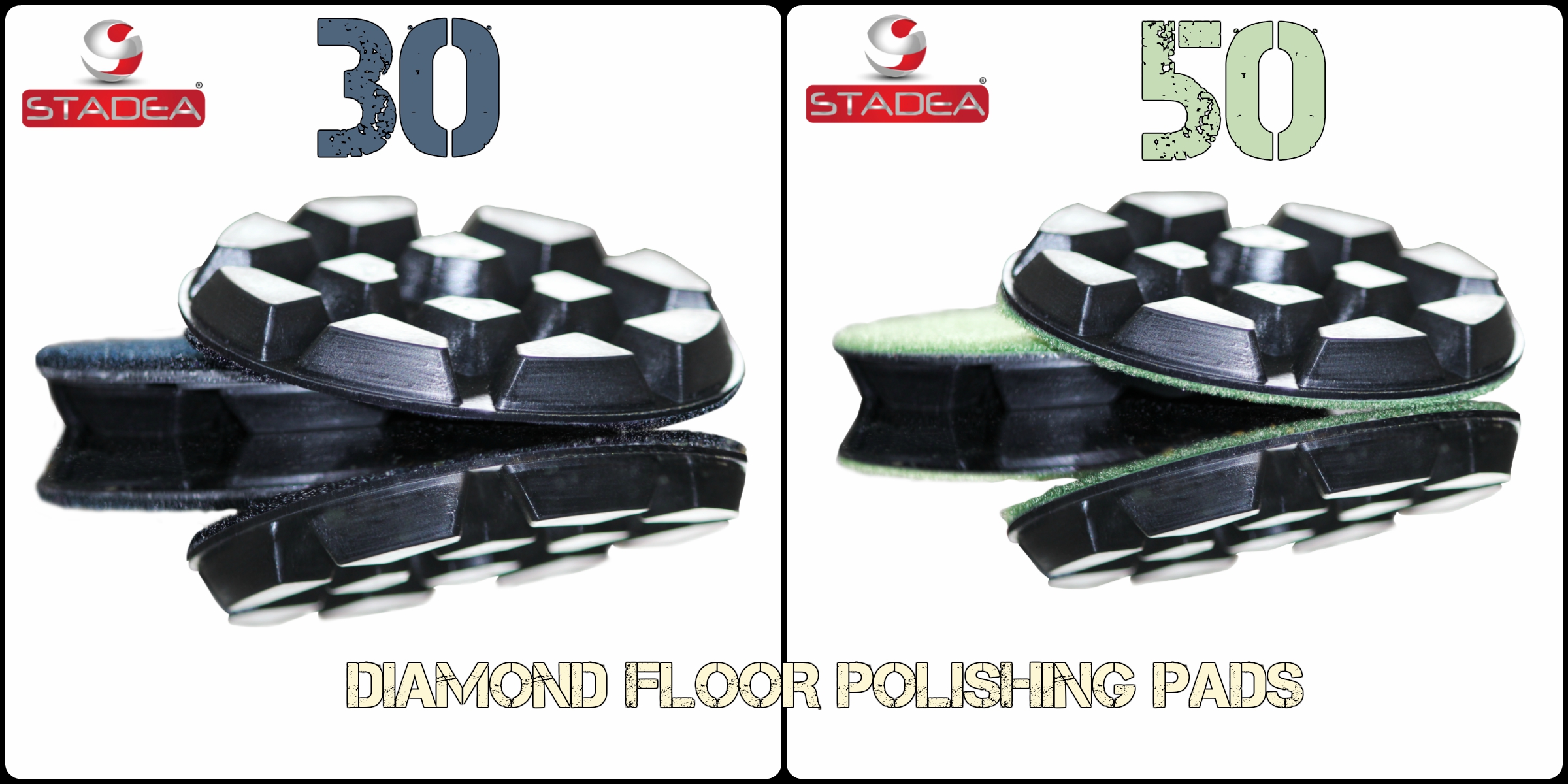
Tip:
- Floor polisher with coarse grit grinds marble quick. Watch out for over cutting lippage.
- Too high lippage may crack stone at high speed. Watch out speed of polisher
[powr-banner-slider id=d0d81280_1458101947869]
Warning:
- Read instruction manual for floor polisher before use
- Wear insulated gears during wet floor polishing
Step 2 - Honing
The step honing for marble floor polishing restoration repair brings smoothness to the marble floor. It removes any scratch marks on the marble floor. Use Diamond floor polishing pads with grit 100 and grit 200 for this step. The pads with industrial diamonds remove the visible scratches and bring shine. Apart from scratches, honing will also remove stains and give a more uniform appearance. In some cases honing is all that’s needed to get you stone looking spectacular again.
Step 3 - Polishing
Polishing gives semi-shining or shining effect to the marble floor. Polishing is done by industrial diamonds floor pads with grit 400, grit 800 and grit 1500. For marble floors in a good
Step 4 - Buffing
In this step marble is polished with the finer grit 3000 or Buff. At times, Crystallization of Marble is done for finishing. Crystallization of marble is a chemical reaction and has a long-term impact on Stone durability. This method will bring back a mirror like shine by chemical reaction on the surface of marble.
Step 5 - Sealing Marble
Seal the polished marble floor with a proper penetrating sealant to prevent water absorption. This final step also stops cracks and chips from starting. This step is essential for either old marble floor restoration or new marble polishing. Apply good quality marble sealer at least once every year.
The following steps are recommended for marble floor restoration and polishing:
- Remove All Furnishings
- Complete Access
of Area - Completely Empty the Room
- Protect All Walls & Built-In Furniture
- Cover & Tape Areas Preventing Over-Spray
- Repair Holes in Floor
- Hand Detailing
- Complete Cleanup
Marble Diamond Floor Polishing Pads Equipments
Marble floor polishing needs diamond floor polishing pads and polishing equipment. Marble restoration equipment and diamond floor polishing pads
General Maintenance of Marble Floor
Some of the cleaning solutions can crystallize and damage its natural soft stone bond. A professional or little knowledge on marble cleaner bring its natural shine. A right cleaning product and polishing technique do not destroy these minerals. If you clean marble without proper cleaner and equipment you will destroy the finish. General cleaners eat through Marble minerals and the shine fades away. It will cost money to reverse the damage by fixing it yourself or with the help of professionals.
Marble floor needs proper maintenance and care. As Marble floors are expensive, it needs the proper maintenance to protect your investment. Neglected or abused marble floor can get permanent damage. On extensive damage, It is important to take the recommendations from marble polishing professionals.
No matter how cautious we are accidents will happen that will stain the marble. There are some simple steps that can be done to help clean the stains before they are set into the marble.
Sugar Based Stains:
For sugar-based stains, moisten a household sponge in warm water. Add a few drops of marble safe dishwashing liquid. Scrub the spot and rinse with clean water. Use a paper towel to dry the area.
Tomato Based Stains:
For food such as tomato and tomato sauce similar approach works. Use the same method but add a little hydrogen peroxide to the warm soapy water.
No matter what stain you have it is better to address it quickly before the stain sets into the marble. Your local home improvement store carries general maintenance kits with the above ingredients.
Can I do Marble Restoration DIY
Are you are a stubborn DIY who has
For complete marble installation as well as marble floor maintenance, you can reach professionals. You can find trained stone professionals for marble installation and repair on




